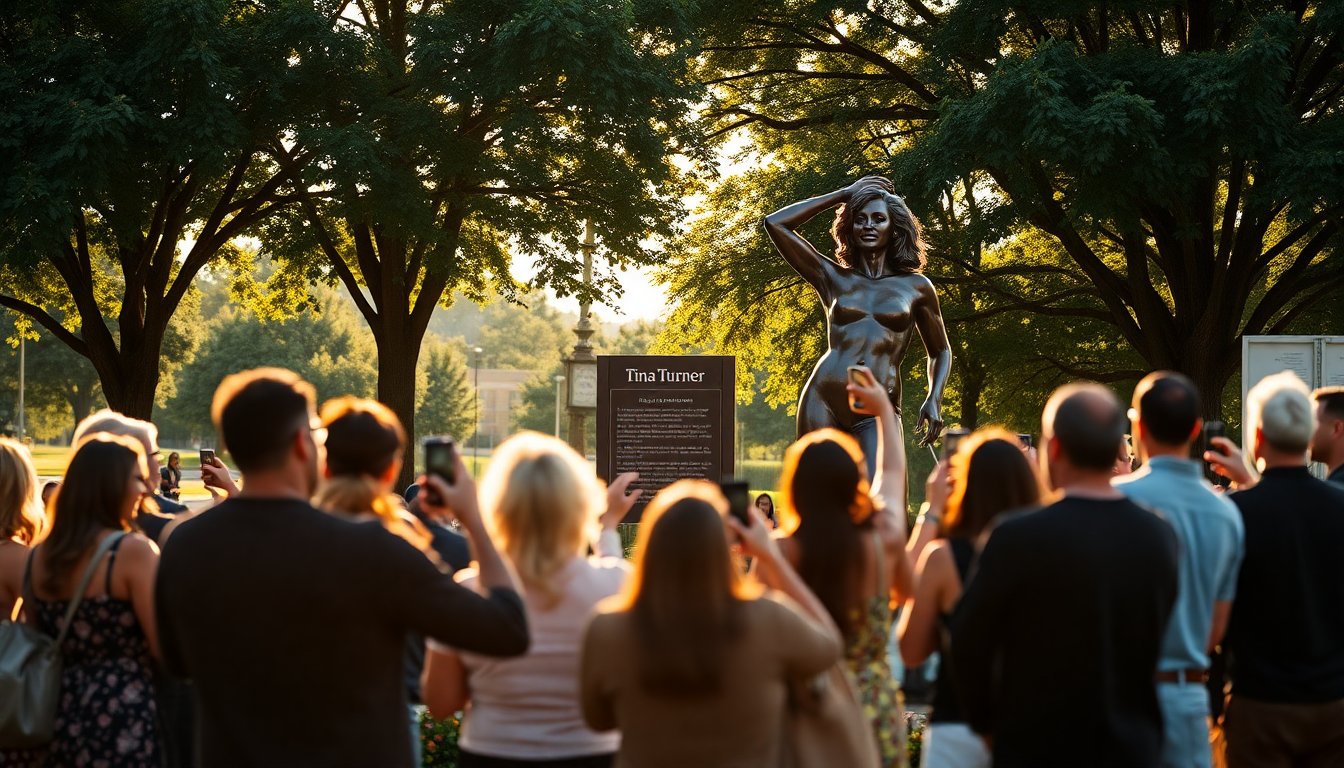Table of Contents
The recent unveiling of a statue honoring Tina Turner in her birthplace of Brownsville, Tennessee, has prompted a range of reactions. While many fans celebrate the singer’s legacy, others express disapproval, highlighting the polarizing nature of celebrity memorials. Few topics ignite such passionate discourse in public art as the depiction of beloved figures in statue form.
Tina Turner, celebrated for her powerful voice and remarkable rise from humble beginnings to global superstardom, inspires many. However, the decision to erect a statue in her honor has sparked contention. This incident reflects a broader trend in public perception of celebrity statues, often viewed through a lens of admiration and skepticism.
Mixed reactions to the tribute
The statue has become a focal point of discussion in Brownsville, with reactions ranging from amusement to outright criticism. Social media platforms are filled with comments, where some users find humor in the statue’s design, while others feel it fails to accurately represent the legendary performer. This division mirrors society’s complex relationship with celebrity culture, where public figures are both idolized and scrutinized.
Critics argue the statue does not encapsulate Turner’s essence, pointing out design flaws that undermine her legacy. Supporters, however, view the tribute as a celebration of her contributions to music and culture. This ongoing debate emphasizes how personal connections to celebrities can shape perceptions of public art.
Historical context of celebrity statues
The controversy surrounding Turner’s statue is not an isolated incident. Statues of various celebrities worldwide have sparked similar debates. For instance, the statue of Lucille Ball in her hometown of Jamestown, New York, faced backlash for its artistic representation, leading to discussions about the appropriateness of such tributes. Similarly, a statue of Cristiano Ronaldo in Madeira, Portugal, was ridiculed for its perceived lack of resemblance to the football star.
These instances illustrate a recurring theme: memorializing public figures requires balancing artistic interpretation with audience expectations. Statues intended to honor famous personalities can sometimes become sources of amusement or derision, reflecting the subjectivity inherent in art.
The impact of social media on public discourse
In today’s digital age, unveiling a statue can quickly become a trending topic on social media. This phenomenon amplifies public reactions, as individuals share their thoughts and feelings instantly. In the case of Tina Turner, mixed reviews have proliferated, leading to both support and criticism of the monument.
Social media serves as a platform for collective expression, where users voice their opinions, whether in support of the statue or against it. This rapid dissemination of feedback shapes public perception and influences how future memorials may be designed. Turner’s statue may encourage artists and municipalities to reconsider their approaches to creating such tributes.
Future implications for celebrity memorials
As society continues to grapple with the legacy of cultural icons, the debate surrounding celebrity statues will likely persist. The reactions to Tina Turner’s statue in Brownsville may catalyze more thoughtful discussions about how we choose to honor those who have impacted our lives.
Moving forward, it is essential for artists and city planners to engage with the communities they aim to represent. By understanding the diverse perspectives of fans, critics, and the general public, future memorials can strive to achieve a balance that resonates meaningfully with all stakeholders. The goal should be to create art that not only commemorates a figure’s legacy but also invites reflection and conversation within the community.
Tina Turner, celebrated for her powerful voice and remarkable rise from humble beginnings to global superstardom, inspires many. However, the decision to erect a statue in her honor has sparked contention. This incident reflects a broader trend in public perception of celebrity statues, often viewed through a lens of admiration and skepticism.0


